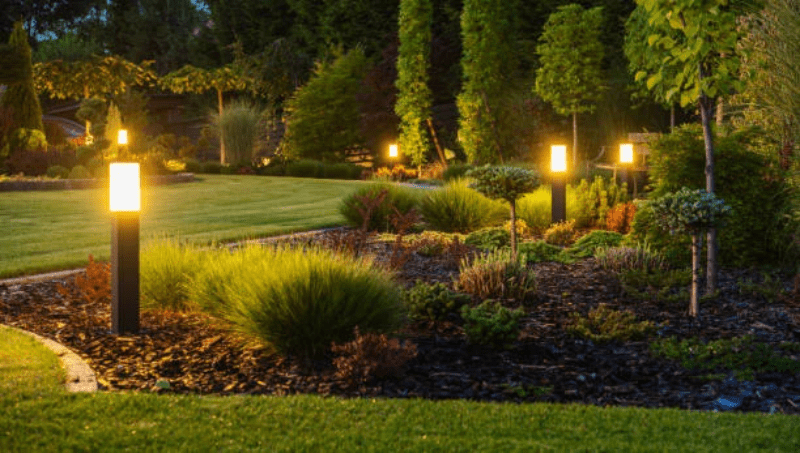
As the sun sets over the picturesque town of Andover, Massachusetts, the landscape transforms into a canvas of twinkling lights, casting a warm and inviting glow over the streets, homes, and gardens. This enchanting spectacle is not just a natural phenomenon, but the result of meticulous planning and execution by skilled professionals in the field of landscape lighting. In this article, we will delve into the world of landscape lighting in Andover, MA, exploring its benefits, design principles, and installation techniques to help you create a luminous landscape that will leave a lasting impression. Click here to learn more about Landscape Lighting Andover MA.
Benefits of Landscape Lighting
Landscape lighting is more than just a decorative element; it serves several practical purposes. By illuminating walkways, steps, and stairs, it enhances safety and reduces the risk of accidents. It also highlights the architectural features of a property, making it more attractive and increasing its curb appeal. Moreover, landscape lighting can be used to create ambiance and set the mood for outdoor gatherings and events. By strategically placing lights, you can create a sense of warmth and hospitality, making your outdoor space an extension of your indoor living area.
Design Principles of Landscape Lighting
Effective landscape lighting requires a thoughtful and deliberate approach. The first step is to assess the layout of your property, taking into account the natural topography, vegetation, and architectural features. Next, consider the purpose of the lighting – is it to highlight specific features, create ambiance, or provide safety? Once you have a clear understanding of your goals, you can begin designing a lighting plan that incorporates the principles of contrast, texture, and depth.
Contrast is achieved by juxtaposing light and dark elements, creating visual interest and guiding the viewer's eye through the landscape. Texture is added by incorporating different light sources, such as spotlights, uplights, and downlights, to create a sense of depth and dimensionality. Finally, depth is created by layering lights, using different intensities and colors to create a sense of distance and perspective.
Installation Techniques for Landscape Lighting
Proper installation is crucial for the success of your landscape lighting project. The first step is to choose the right materials, selecting lights that are durable, weather-resistant, and suitable for outdoor use. Next, plan the layout of your lights, taking into account the placement of trees, shrubs, and other obstructions. Finally, install the lights, ensuring that they are securely fastened and protected from the elements.
Some popular installation techniques include:
1. In-ground lighting: This involves burying lights in the ground, often in a trench or hole, to create a sleek and unobtrusive appearance.
2. Surface-mounted lighting: This involves attaching lights to the surface of a wall, fence, or other structure, providing a clean and minimalist look.
3. Hidden lighting: This involves concealing lights behind plants, rocks, or other natural features, creating a sense of subtlety and understatement.
Choosing the Right Lights for Your Landscape
With so many options available, selecting the right lights for your landscape can be overwhelming. Here are a few tips to help you make an informed decision:
1. Consider the purpose of the lighting – is it to highlight specific features, create ambiance, or provide safety?
2. Think about the style and aesthetic you want to achieve – modern, traditional, or a mix of both?
3. Choose lights that are durable, weather-resistant, and suitable for outdoor use.
4. Consider the color temperature of the lights – warm white, cool white, or a combination of both.
5. Don't forget to factor in the cost and maintenance requirements of the lights.
Landscape Lighting and Energy Efficiency
As concern for the environment continues to grow, many homeowners are looking for ways to reduce their energy consumption and carbon footprint. Landscape lighting is no exception. By choosing energy-efficient lights, such as LEDs or solar-powered lights, you can significantly reduce your energy consumption and minimize your environmental impact.
In addition to choosing the right lights, there are several ways to optimize your landscape lighting for energy efficiency:
1. Use timers or sensors to automate your lighting, reducing energy consumption and extending the life of your lights.
2. Install motion sensors to detect movement and adjust the lighting accordingly, reducing energy consumption and minimizing waste.
3. Consider using low-voltage lighting, which is not only more energy-efficient but also safer and more durable.
Conclusion
Landscape lighting is an art form that requires creativity, attention to detail, and a deep understanding of the principles of design and installation. By incorporating the principles of contrast, texture, and depth, you can create a luminous landscape that is both beautiful and functional. Whether you're looking to highlight specific features, create ambiance, or provide safety, landscape lighting is an investment that will pay dividends for years to come. So why not take the first step and illuminate your outdoor space, transforming it into a work of art that will leave a lasting impression on all who see it.
